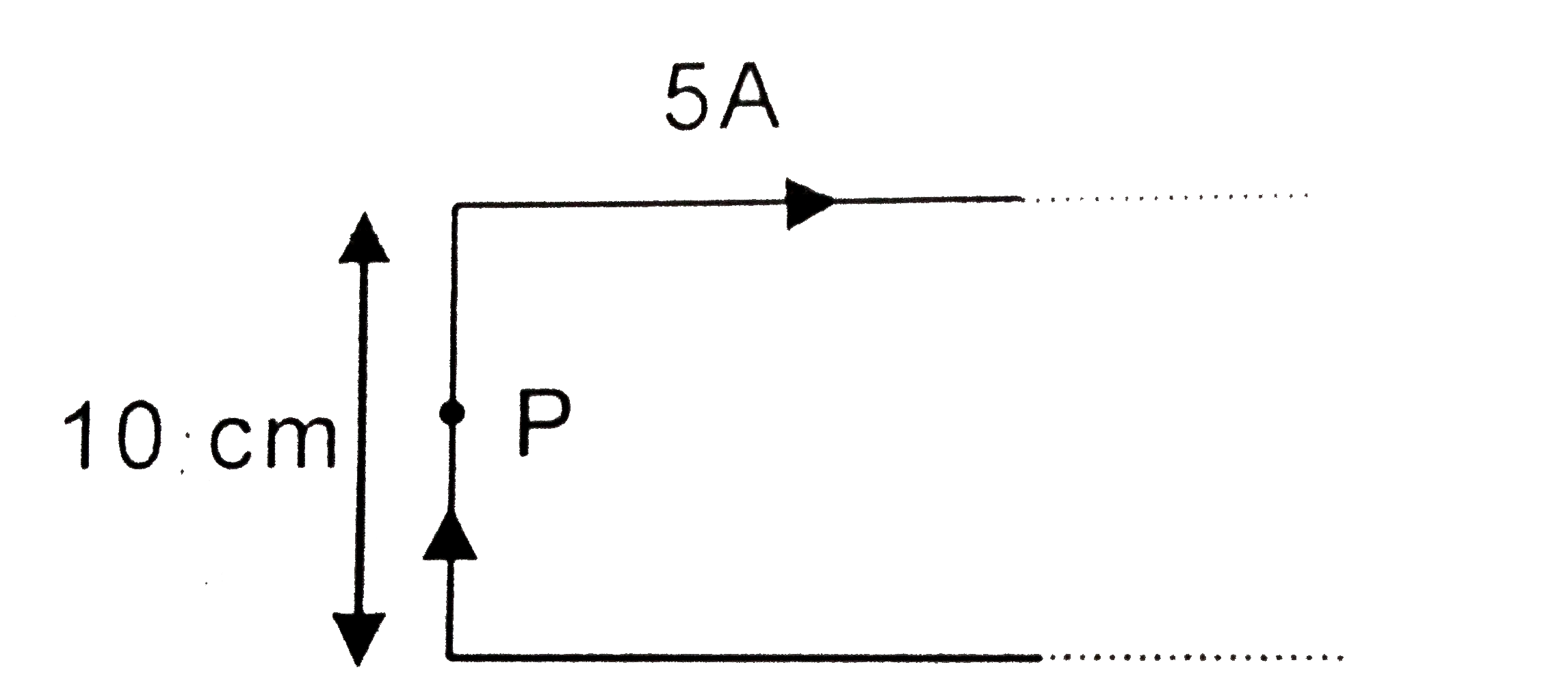Show dimensionally that the pressure is given by (i) energy per unit volume (ii) force per unit area.
To show dimensionally that pressure can be expressed as (i) energy per unit volume and (ii) force per unit area, we will follow these steps:
Step 1: Understanding the Dimension of Pressure
Pressure (P) is defined as force (F) applied per unit area (A). The dimension of pressure can be expressed as:
(P)=(F)(A)
Step 2: Finding the Dimension of Force
Force is defined by Newton's second law as mass (m) times acceleration (a). The dimension of force can be expressed as:
(F)=(m)(a)=(M)(L)(T−2)
where:
- (M) = dimension of mass
- (L) = dimension of length
- (T) = dimension of time
Step 3: Finding the Dimension of Area
Area is defined as length squared:
(A)=(L2)
Step 4: Combining the Dimensions to Find Pressure
Now substituting the dimensions of force and area into the pressure equation:
(P)=(F)(A)=(M)(L)(T−2)(L2)=(M)(L−1)(T−2)
Thus, the dimension of pressure is:
(P)=(M)(L−1)(T−2)
Step 5: Expressing Pressure as Energy per Unit Volume
Energy (E) is defined as work done, which is force times distance. Therefore, the dimension of energy can be expressed as:
(E)=(F)(d)=(M)(L)(T−2)(L)=(M)(L2)(T−2)
Now, to find energy per unit volume, we divide the dimension of energy by the dimension of volume. The dimension of volume (V) is:
(V)=(L3)
Thus, energy per unit volume is:
(E)(V)=(M)(L2)(T−2)(L3)=(M)(L−1)(T−2)
This is the same as the dimension of pressure:
(E)(V)=(P)
Step 6: Expressing Pressure as Force per Unit Area
Now, we will show that pressure can also be expressed as force per unit area:
We already have:
(P)=(F)(A)=(M)(L)(T−2)(L2)=(M)(L−1)(T−2)
This confirms that the dimension of pressure can also be expressed as force per unit area:
(F)(A)=(P)
Conclusion
We have shown dimensionally that pressure can be expressed as:
1. Energy per unit volume: (P)=(E)(V)
2. Force per unit area: (P)=(F)(A)
Pressure (P) is defined as force (F) applied per unit area (A). The dimension of pressure can be expressed as:
(P)=(F)(A)
Force is defined by Newton's second law as mass (m) times acceleration (a). The dimension of force can be expressed as:
(F)=(m)(a)=(M)(L)(T−2)
where:
- (M) = dimension of mass
- (L) = dimension of length
- (T) = dimension of time
Area is defined as length squared:
(A)=(L2)
Now substituting the dimensions of force and area into the pressure equation:
(P)=(F)(A)=(M)(L)(T−2)(L2)=(M)(L−1)(T−2)
Thus, the dimension of pressure is:
(P)=(M)(L−1)(T−2)
Energy (E) is defined as work done, which is force times distance. Therefore, the dimension of energy can be expressed as:
(E)=(F)(d)=(M)(L)(T−2)(L)=(M)(L2)(T−2)
Now, to find energy per unit volume, we divide the dimension of energy by the dimension of volume. The dimension of volume (V) is:
(V)=(L3)
Thus, energy per unit volume is:
(E)(V)=(M)(L2)(T−2)(L3)=(M)(L−1)(T−2)
This is the same as the dimension of pressure:
(E)(V)=(P)
Now, we will show that pressure can also be expressed as force per unit area:
We already have:
(P)=(F)(A)=(M)(L)(T−2)(L2)=(M)(L−1)(T−2)
This confirms that the dimension of pressure can also be expressed as force per unit area:
(F)(A)=(P)
We have shown dimensionally that pressure can be expressed as:
1. Energy per unit volume: (P)=(E)(V)
2. Force per unit area: (P)=(F)(A)
Topper's Solved these Questions
- DIMENSIONSBOOK - ICSECHAPTER - DIMENSIONSEXERCISE - LONG ANSWER QUESTIONS
3 Videos
- DIMENSIONSBOOK - ICSECHAPTER - DIMENSIONSEXERCISE - SHORT ANSWER QUESTIONS
12 Videos
- DIMENSIONSBOOK - ICSECHAPTER - DIMENSIONSEXERCISE - SELECTED PROBLEMS (FROM CONVERSIONS OF ONE SYSTEMS OF UNITS INTO ANOTHER)
9 Videos
- COMPETITION CARE UNITBOOK - ICSECHAPTER - COMPETITION CARE UNITEXERCISE - OBJECTIVE QUESTIONS FROM PREVIOUS IAS EXAMINATIONS
50 Videos
- DYNAMICSBOOK - ICSECHAPTER - DYNAMICSEXERCISE - SHORT ANSWER QUESTIONS WITH ANSWERS
12 Videos
Similar Questions
Knowledge Check
The elastic energy stored per units volume in a streched wire is
A12(Stress)YB12(Stress)2YC12(Stress)2Y2D12(Stress)Y2
Name
Mass per unit volume
View SolutionShow that the pressure energy per unit volume of a liquid is P.
View SolutionFind force per unit length at P

View SolutionWork done per unit time
View SolutionThe stored energy per unit volume of a stretched wire is
View SolutionFor an ideal gas, pressure (p) and interal energy (E) per unit volume are related as
View SolutionRelation between pressure (P) and average kinetic energy per unit volume of gas (E ) is
View Solution
